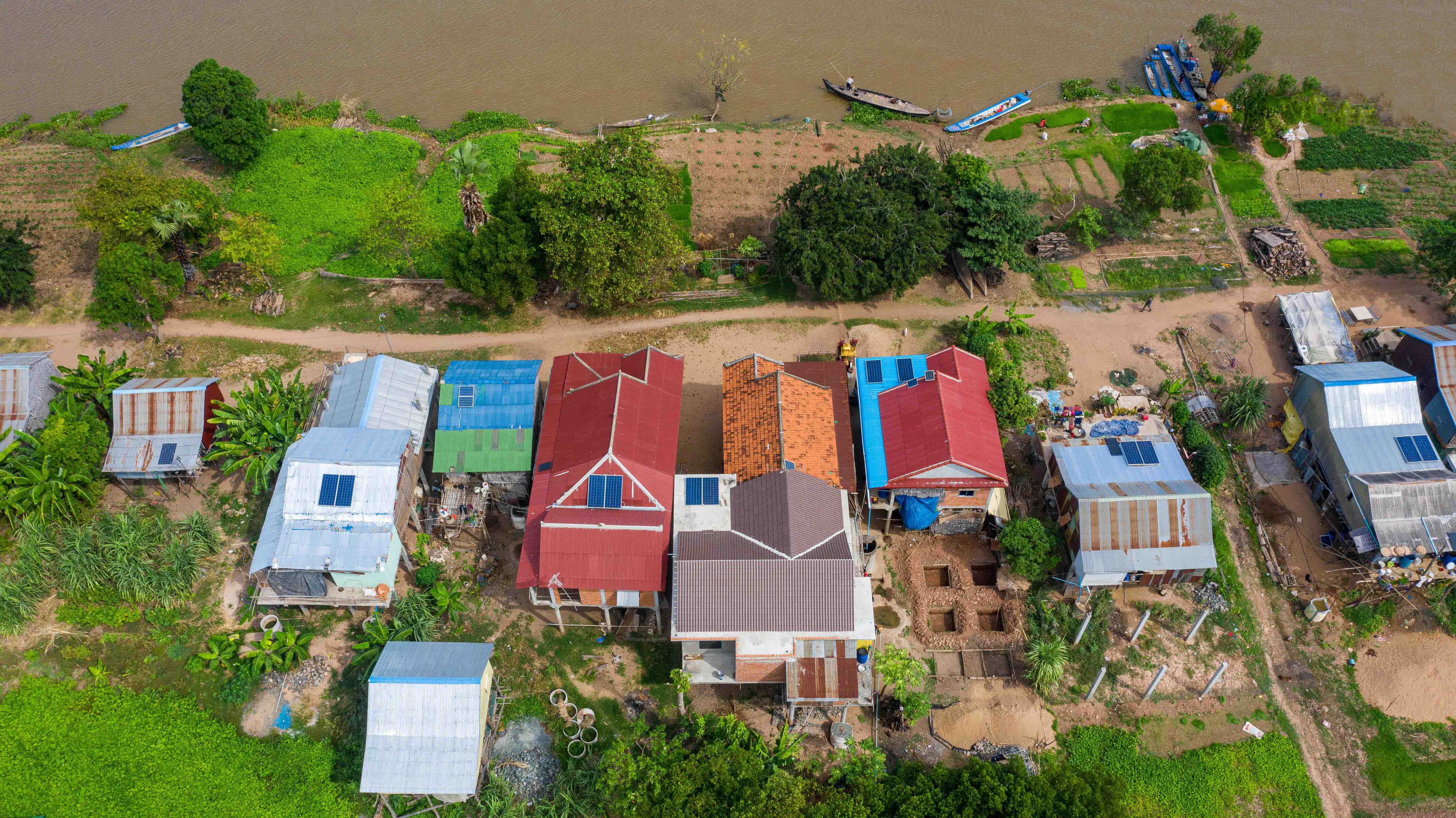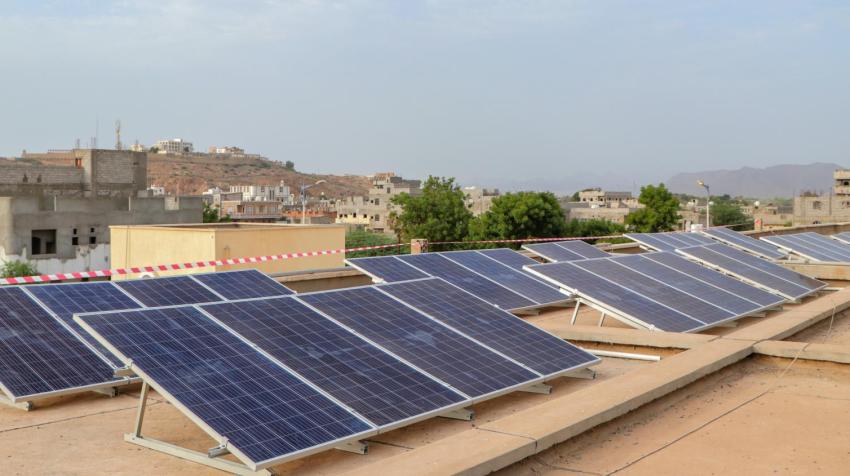The economic, societal and environmental benefits of renewable energy are numerous - It is available in abundance, cheaper and a healthier option for us and our planet.
As technology and access to renewable energy sources - such as solar, wind, water, heat and biomass - improve, many more countries and communities are embracing their use not only to power their homes, schools, hospitals and workplace, but also as a viable option for employment and business opportunities.
Learn more about types and benefits of renewable sources of energy.
Latest data from the International Renewable Energy Agency and the International Labour Organization shows that employment in the renewable energy sector reached 12.7 million in 2021, a jump of 700,000 new jobs in just 12 months, despite the lingering effects of COVID-19 and the worsening energy crisis.
Let’s take a spin around the world and look at the growing demand for the power of renewables.

Japan: Geothermal power revitalizes a town in Fukushima
Japan has the world's third largest geothermal resources. However, geothermal power accounts for less than 1 per cent of total energy generated in Japan. “Tsuchiyu Onsen Town” in Fukushima prefecture, which is famous for its hot springs with a 1400-year history, has recently attracted public attention for its geothermal power plant providing renewable energy to the community. Using steam to turn large turbines which run electrical generators, the plant is capable of generating enough electricity to power 800 households in a town of just 160 households.
Not long ago, in 2011, the region experienced unprecedented hardships in the form of the Great East Japan Earthquake and the accident at the Fukushima Daiichi Nuclear Power Plant. Using the rich hot springs in the area, renewable energy became central to the town's reconstruction. The geothermal power plant that went into operation in 2015 has provided reliable energy and generated abundant revenue from electricity sales that is being re-invested in the town's welfare and tourism promotion.
Bangladesh: Roadmap to climate resilience
By transitioning from natural gas to green hydrogen and biomass power plants, the Mujib Climate Prosperity Plan is Bangladesh’s roadmap for climate resilience, energy independence, and access to renewable energy by 2030.
Over the next few years, the country plans to achieve 30 per cent renewable energy consumption and 30 per cent electrified transportation, extending energy access to 100 per cent of the population, providing more than 4 million climate-resilient jobs, and ensuring widespread clean cooking solutions.

Cambodia: Changing the lives of rural communities
In 2000, less than 7 per cent of Cambodia’s rural areas - home to 75 per cent of the population - had access to electricity. Today, that number has soared to nearly 100 per cent as communities in some 13,700 villages, many of them remote, now have electricity.
How? With solar-based decentralized mini-grids. The UN Development Programme calls Cambodia “a fast-mover in embracing renewables.” Through transitioning to renewables, countries like Cambodia are looking at long-term economic benefits, laying the foundation for a low-carbon economy and energy security without jeopardizing the health of our planet.

Chile: Geothermal energy in the desert
Chile was the first country in South America to champion the use of geothermal energy, having spent recent years establishing a legal framework and developing manufacturing capacity to accommodate the production of renewable energy. Since 2017, the World Bank has been supporting the government’s efforts to remove specific legal, social and market barriers and improve geothermal market conditions.
Chile’s Cerro Pabellón plant, located in the Atacama Desert at 4,500 meters above sea level, is now the only commercial-scale geothermal plant in the region. It helps to heat and cool homes, hotels and schools as well as power greenhouses, fish farms and even vineyards.

Denmark: World’s first artificial wind island
In 1991, Denmark was the first country to build an offshore wind farm. In recent years, the Scandinavian country has been working towards building the world’s first-ever artificial wind energy island - the largest construction project in Danish history.
The size of the island will eventually be equivalent to 64 football fields, providing wind-powered energy to some ten million families across Europe as well as powering planes, ships and heavy industries.
In 2021, Denmark also teamed up with Costa Rica to launch a new initiative called Beyond Oil and Gas, calling on more countries to join the coalition and support global efforts to transition to renewable energy.
Egypt: Tapping into a nation’s energy potential
In 2016, Egypt adopted a plan to facilitate the transition to clean energy, targeting more than 40 per cent renewables in its total electricity generation by 2035. To do so, the government established the Grid-Connected Small-Scale Photovoltaic Project, investing in the country’s energy potential, and tapping into the needs of the industrial, educational, tourism, commercial, residential, and public sectors.
Today, an estimated 125 individual solar power systems have been installed, with the ability to produce 17,000 megawatt-hours of electricity annually, benefiting around nearly 9,000 families and businesses.
El Salvador: Improving energy security
El Salvador entirely depends on imported fossil fuels and electricity to meet its domestic demand for energy but in the last decade has prioritised the development of renewables to mitigate import dependency and improve its energy security.
Today, to expand its electricity access and diversify its energy mix, it is scaling up the production of solar, wind, bioenergy, hydropower and geothermal energy.
Latest data shows that more than 2 million jobs have been created by the renewable energy sector in Latin America and the Caribbean by 2017, and that number is expected to reach 3 million jobs by 2030.
India: Wind, Solar, and Hydropower
With a rapidly growing population of 1.38 billion, there is a great demand for energy in India. In 2020, the UN Environment Programme teamed up with the country’s largest renewable energy company, ReNew Power, to accelerate the development and use of a diverse mix of renewable energy across the country, advancing India’s ambitious climate plans to realize its Nationally Determined Contribution under the Paris Agreement.

Malawi: Keeping children healthy with solar technology
With the installation of solar grids, Malawi and its partners such as UNICEF are prioritizing the availability of renewable and affordable energy for communities in hard-to-reach, rural communities that are unable to access the centralized national electricity grid.
Today, energy solutions like mini-grids and standalone solar grids supply electricity for essential services, including water purification, healthcare, and education facilities, that are especially critical for the development and wellbeing of children.
New Zealand: Towards full renewable electricity generation
In 2019, nearly 50 per cent of the total supply of electricity in New Zealand came from renewable sources, particularly energy generated from biomass, geothermal, hydropower and the ocean.
The country continues to phase out its offshore oil and gas productions, and is currently considering options for 100 per cent renewable electricity generation, backed by its large hydro storage capacity.
Small Island Developing States: Powering a safer future
The SIDS Lighthouse initiative, which was launched during the UN Climate Change Conference in 2014, works with governments, regional and international organizations, the private sector and civil society, to help some 40 islands across the Caribbean, the Pacific and the Atlantic transition to renewable energy and support much-needed climate action.
Since the launch of the initiative, the use of renewables has grown consistently, with a remarkable acceleration in the years before the COVID-19 pandemic. Installed renewable energy capacity in the island states grew from 3.5 GW in 2014 to 5.9 GW in 2020, hitting record growth of 19.5 per cent between 2018 and 2019.
Yemen: Powering critical healthcare facilities
Suffering from a prolonged and protracted humanitarian crisis and considered a least developed country, many Yemeni communities lack access to basic services, including healthcare and energy.
In 2022, a UN-led initiative called Renewable Energy Improve Access to Health Services and Livelihood Opportunities or HEAL is helping to finance and support 50 Yemeni-owned solar energy microgrid businesses that can provide electricity to critical healthcare facilities in several governorates, creating job opportunities, tackling energy poverty and providing much-needed health services.



